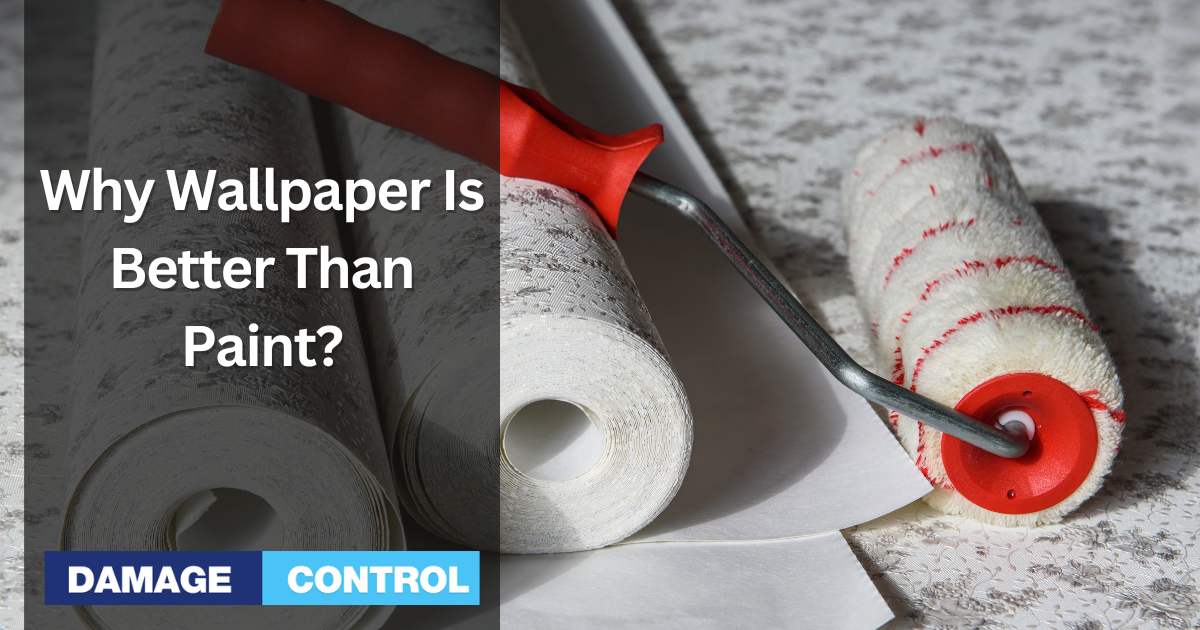When you're revamping a room, choosing between paint and wallpaper can be tough. Both have their pros and cons. But, let's dive deep and explore why wallpaper might just be the superior choice.
Durability
First off, think about durability:
- Wallpapers: Typically last up to 15 years.
- Paint: Often requires a touch-up every 2-3 years.
Wallpapers clearly win this round. They resist wear and tear longer, making them a cost-effective option in the long run.
Design Diversity
Next, consider design options. Wallpapers shine here:
- Patterns: Floral, geometric, and more.
- Textures: Velvet, silk, grasscloth, to name a few.
- Murals: Landscape, cityscape, or a custom print.
With paint, you're mostly choosing a color, maybe a finish. Wallpaper? It's a world of choice.
Easy Transformation
Imagine you want to give a room a new vibe. With wallpaper, it's a breeze. Swap out old patterns for new ones. Refreshing a painted room demands more labor and time.
The Illusion of Space
Space is a luxury. And wallpapers can help here too. Vertical stripes? They make a room seem taller. Horizontal ones? They broaden a space. Paint can't play this trick as effectively.
Maintenance and Cleaning
You might think paint has an edge here. Yet, you'd be surprised:
- Wallpapers: Modern designs are often washable.
- Paint: Requires regular cleaning and might fade over time.
So, wallpapers are not only attractive but practical too.
Application
The thought of applying wallpaper can be intimidating to many. The perceived complexities and potential for mistakes often deter homeowners. However, with a deeper understanding and appreciation of modern solutions, this perspective might shift.
Modern Wallpaper Innovations
Wallpapers have come a long way, making the application process more user-friendly than ever before.
- Pre-pasted Wallpapers: Gone are the days of messy glue pots. These wallpapers come with an adhesive already applied. Simply activate with water, position, and smooth out.
- Peel-and-Stick: Like a giant sticker, these wallpapers can be easily applied and repositioned if needed. Plus, removal is hassle-free, leaving no residue behind.
- Non-woven Wallpapers: These wallpapers are designed to breathe, reducing the risk of mold and mildew. They are also tear-resistant, which means they can be adjusted during application without damage.
Painting: A Task Not to be Underestimated
Painting, while often viewed as straightforward, has its set of challenges.
- Preparation: This can be the most time-consuming part. Walls need to be cleaned, holes and cracks filled, and often, old paint or wallpaper removed.
- Priming: Essential for ensuring the paint adheres properly and looks its best. This is an additional layer, waiting time, and cost.
- Multiple Coats: Depending on the color and quality of the paint, several coats may be needed. Each coat involves waiting for the previous layer to dry before reapplication.
Getting it Right
No matter the choice, application success hinges on attention to detail.
- Wallpaper: Ensuring there are no bubbles, aligning patterns correctly, and trimming edges are crucial steps.
- Paint: Achieving an even finish, ensuring no drip marks, and using the right techniques all play a role in a job well done.
The Environment Angle
Thinking green? Wallpapers have got you covered:
- Eco-friendly: Many are made of recyclable materials.
- Longevity: Remember, they last longer than paint.
Hence, over a decade, you might repaint a room 4-5 times. But, wallpaper it? Just once. It's eco-friendlier and wallet-friendlier.
Cost Perspective
It's a common misconception: paint appears to be the more budget-friendly option at first glance. However, let's examine this belief more closely.
Initial Outlay
- Paint: Buying quality paint, brushes, rollers, and other essentials can quickly add up. And while the initial price tag might be lower than wallpaper, it's essential to think beyond just the starting cost.
- Wallpaper: Yes, quality wallpaper and the necessary tools for application can come with a slightly steeper price. Yet, it's a long-term investment.
Longevity
Wallpapers, especially the high-quality ones, can stay pristine for up to 15 years. Paint, on the other hand, often starts to show signs of wear after just a few years. That means:
- Repainting Frequency: With paint, you might find yourself redoing the walls every 2-3 years, especially in high traffic areas.
- Wallpaper’s Staying Power: Once up and set, wallpapers can keep their charm for over a decade, requiring no re-application.
Maintenance Costs
- Paint: Regular cleaning, possible fading, and chipping can lead to multiple touch-ups over the years. Every touch-up comes with additional costs, not to mention the hassle.
- Wallpaper: Modern wallpapers are designed to be washable and durable. They resist stains and everyday wear, translating to negligible maintenance costs over the years.
The Real Value
If you were to map out the expenses over a 10 or 15-year period:
- Paint: Multiple repaints, touch-ups, and maintenance can make the seemingly cheaper option more expensive in the long run.
- Wallpaper: The one-time investment, coupled with minimal maintenance, often translates to better value for money.
Room Acoustics
Did you know? Wallpapers can enhance a room's acoustics. They can absorb sound better than paint. So, they're not just about aesthetics.
Conclusion
Choosing between paint and wallpaper is no easy task. Both bring something to the table. However, considering durability, design options, and cost over time, wallpapers have an edge. And with modern wallpapers being easy to apply and maintain, they offer a blend of beauty and practicality that's hard to resist. So, next time you're thinking of a room makeover, give wallpaper a second look. You might be pleasantly surprised.

